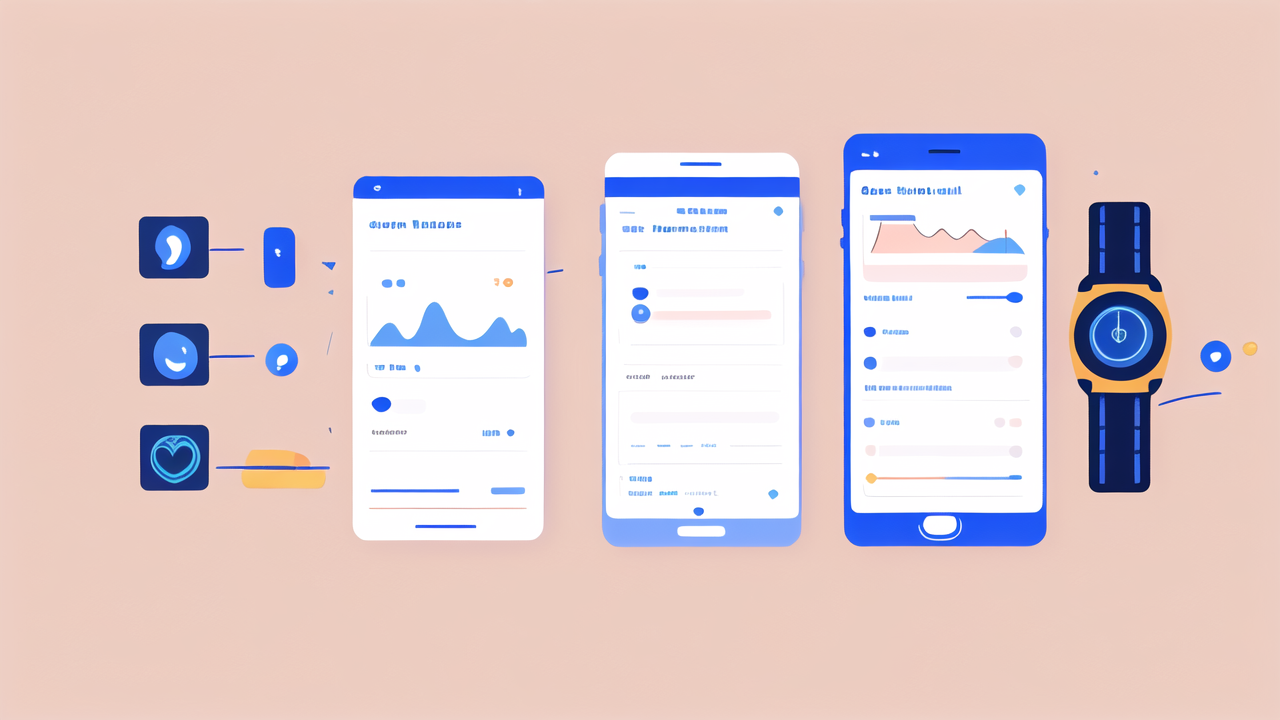The Rise of Smart Watches in the Health and Fitness Industry
Overview of Smart Watch Technologies
Smart watches have become a game-changer in the health and fitness world. These devices are more than just timepieces. They're packed with sensors and advanced tech. Smart watches can track steps, heart rate, and even sleep patterns. Many models offer GPS for accurate distance tracking. Some can measure blood oxygen levels and detect falls. The tech keeps evolving, with new features added regularly. From basic fitness tracking to advanced health monitoring, smart watches do it all. They've become an essential tool for many fitness enthusiasts and health-conscious individuals.

The Impact on Daily Fitness Regimens
Smart watches have transformed how people approach their daily fitness routines. They provide real-time data, helping users make informed decisions. People can now track their steps, calories burned, and active minutes throughout the day. This instant feedback motivates many to move more and sit less. Smart watches also remind users to stand up and move regularly. They can guide workouts, ensuring proper form and intensity. Many people find it easier to stick to their fitness goals with a smart watch. The device acts like a personal coach, always there to encourage and guide.
Trends in Smart Watch Adoption in the United States
Smart watch adoption in the US has seen a steady rise. More people are recognizing the benefits of these devices. Sales have increased year over year, with millions of units sold. Health and fitness features are a major driving factor. Many users start with basic models and upgrade to more advanced ones. Younger generations are leading the adoption trend. However, older adults are also embracing smart watches for health monitoring. The COVID-19 pandemic has further boosted interest in personal health tech. As prices become more accessible, adoption is expected to continue growing.
Advanced Metrics: What Smart Watches Can Measure That Traditional Devices Can't
Heart Rate Monitoring and its Importance
Heart rate monitoring is a key feature of smart watches. Unlike traditional devices, smart watches offer continuous tracking. This provides a more complete picture of your heart health. Users can see how their heart rate changes during exercise and rest. Many watches alert users if their heart rate is too high or low. This can be crucial for those with heart conditions. Smart watches can also detect irregular heart rhythms in some cases. This feature has even saved lives by alerting users to potential heart issues. Heart rate data helps users optimize their workouts and recovery times.

Sleep Quality and its Influence on Well-Being
Smart watches have revolutionized sleep tracking. They can monitor sleep duration and quality. Users can see their sleep stages, including light, deep, and REM sleep. Many watches provide a sleep score to help users understand their overall sleep health. This data can help identify sleep issues and patterns. Users can make informed decisions about their sleep habits. Better sleep leads to improved overall health and well-being. Smart watches often offer tips to improve sleep quality. Some even have features to help users wind down before bed.
VO‒Max and other Performance Indicators
VO‒Max, or maximum oxygen uptake, is a key fitness metric. Smart watches can now estimate this value without lab tests. This helps users track their cardiovascular fitness over time. Other performance indicators include recovery time and training load. These metrics help users balance workout intensity and rest. Some watches offer running dynamics, like cadence and stride length. These insights can help improve running form and efficiency. Performance indicators allow users to train smarter, not just harder. They provide a more holistic view of fitness progress.
Implementing Smart Watches into Fitness Regimens and Lifestyle
Integrating Smart Watches with Existing Fitness Apps
Smart watches can sync with many popular fitness apps. This integration enhances the overall fitness tracking experience. Users can combine data from their watch with detailed app features. Many watches work with apps like Strava, MyFitnessPal, and Nike Run Club. This allows for more comprehensive tracking and analysis. Some apps offer challenges and social features to boost motivation. Users can share their achievements and compete with friends. The integration also makes it easier to log workouts and nutrition. This seamless connection between watch and app creates a more complete fitness ecosystem.

Tips for Using Smart Watches to Improve Fitness Goals
To maximize the benefits of a smart watch, set clear, achievable goals. Use the watch's reminders to stay active throughout the day. Pay attention to trends in your data over time. This can help you adjust your routine for better results. Use the heart rate zones to ensure you're training at the right intensity. Take advantage of guided workouts if your watch offers them. They can add variety to your routine. Don't forget to use the recovery tracking features. They help prevent overtraining and injury. Regularly update your watch and its apps for the latest features. Lastly, use the sleep tracking to improve your rest and recovery.
Long-Term Benefits and User Sustainability
Smart watches offer many long-term benefits for users. They promote consistent health monitoring and awareness. This can lead to lasting lifestyle changes. Users often report increased motivation to stay active. The data provided can help identify health trends over time. This information can be valuable for healthcare providers. Smart watches can also help detect potential health issues early. Many users find they stick with their fitness goals longer when using a smart watch. The devices adapt to changing fitness levels, providing ongoing challenges. As users see progress, they're more likely to maintain healthy habits. Smart watches continue to evolve, offering new features to keep users engaged.




Leave a comment
This site is protected by hCaptcha and the hCaptcha Privacy Policy and Terms of Service apply.